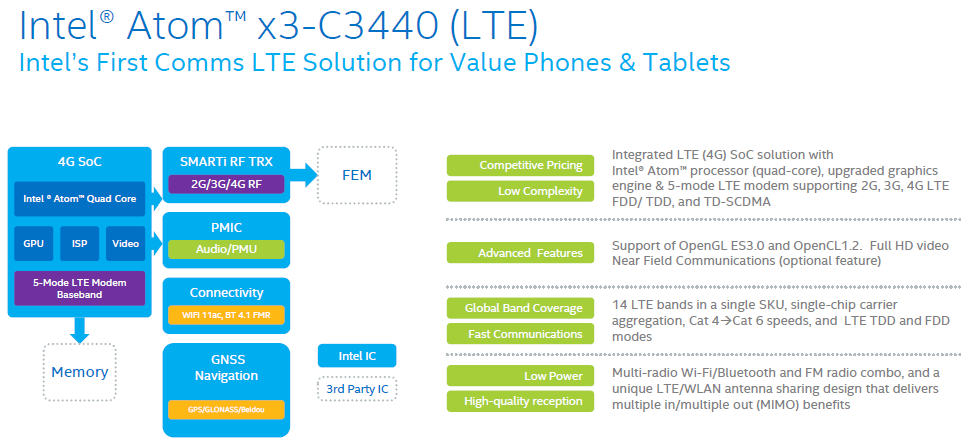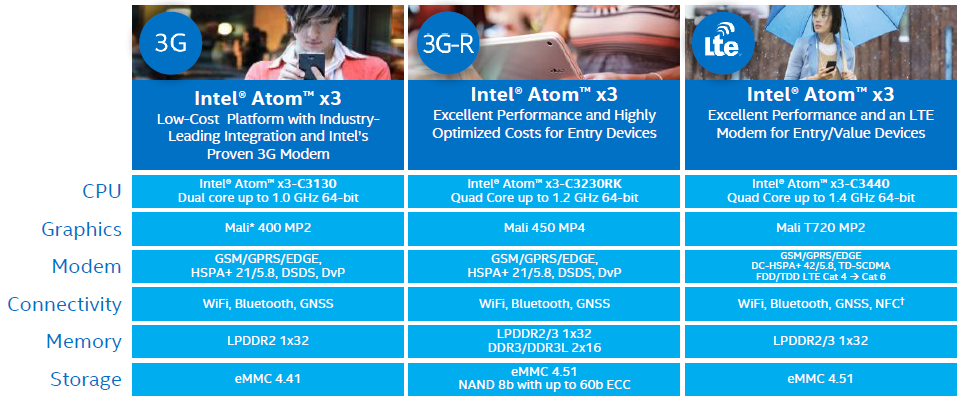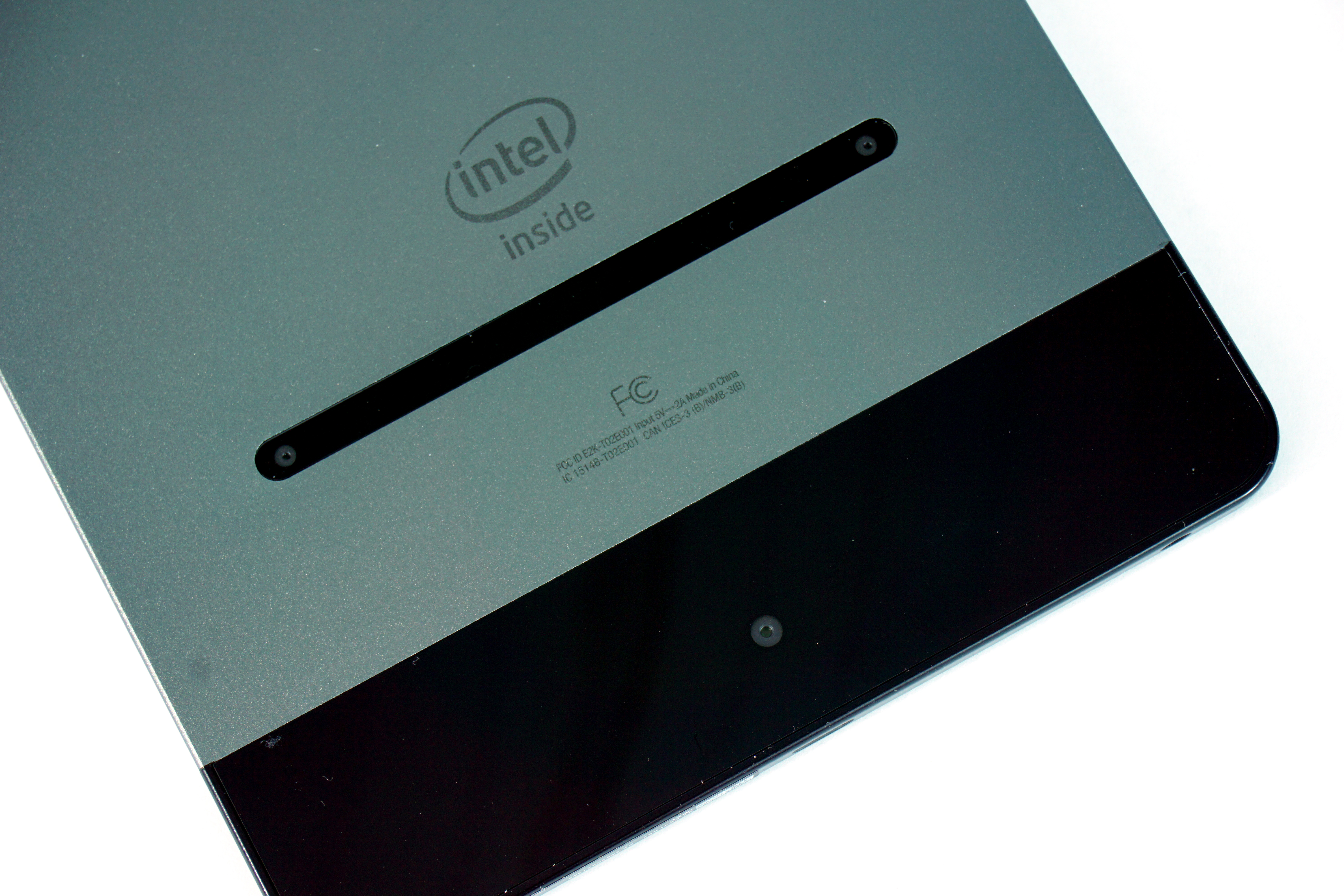Intel Makes Splash In China With Atom x3 (SoFIA) LTE-TDD, IoT Expansion, New Intel RealSense Camera For Smartphones
In addition to the announcement surrounding Braswell SoCs, Intel had a boatload of news to share out of IDF Shenzen, primarily surrounding the company's global mobile strategy. Intel's SoFIA chips got the LTE-TDD treatment, meaning they'll be compatible with China's mobile networks, and the SoFIA roadmap has been expanded to include IoT applications.
There will also be a new RealSense camera coming, and this one will be available on smartphones.
SoFIA Goes To China
Intel made a strong play into the mobile market (particularly for emerging markets worldwide) with its Atom x3 (SoFIA) and Atom x5 and x7 (Cherry Trail) mobile chips at Mobile World Congress last month, and we're already seeing the platforms evolve.
First, Intel demoed an Atom x3 LTE (SoFIA) chip running an actual smartphone, equipped with LTE-TDD to work in China. The demo ran over China Mobile's network and is expected to be available 2H15. Intel did not specify which chip it was exactly, but we presume that it's the Intel Atom x3-C3340.
The quad-core 1.4 GHz, 64-bit x3-C3340 is built for entry-level and value smartphones and has a Mali-T720 MP2 GPU (which supports Full HD video, OpenGL ES3.0 and OpenCL 1.2). It offers LPDDR2/3 memory, eMMC 4.51 storage and has WiFi, Bluetooth, GLONASS and NFC for connectivity. Intel previously stated that the x3-C3340 should offer double the media editing performance of competitors' similar SoCs.
Already a launch partner, Rockchip CEO Min Li gladhanded with Intel CEO Brian Krzanich on the IDF Shenzen stage to promote the Intel Atom 3G-R (aka the x3-C3230RK, the Rockchip variant of SoFIA). He said that 10 or so ODMs are working on products running the 3G-R chip.
The x3-C2320RK is a 64-bit quad-core SoC clocked at 1.2 GHz with a Mali 450 MP4 GPU intended for lower-end tablets, phablets and smartphones and will be in products on the market worldwide in 2H15. Take "worldwide" with a grain of salt, though; the U.S. is most likely not going to see any of these products.
Get Tom's Hardware's best news and in-depth reviews, straight to your inbox.
Atom x3 And The Internet Of Things
Although in retrospect this makes a great deal of sense, it was perhaps a bit of a surprise to learn that Intel has expanded the Atom x3 roadmap to include the Internet of Things (IoT).
Intel is developing purpose-built Atom x3 SoCs to bring 3G and LTE capabilities, and their low power demands, to IoT for applications such as telematics, dash cams, fleet management, point-of-sale (POS), and specially-designed tablets for industry and healthcare. The idea is that the scope of potential applications could reach all the way to the connected home.
With the new Atom x3 chips for IoT, Intel promised longer life; the parts are guaranteed to last seven to 10 years. Further, they can handle operating conditions from -40 to 85 degrees C, and endure through all sorts of different weather conditions.
Smartphones And RealSense
There was but a quick mention of this last point, but Intel's Krzanich also showed off a new RealSense camera mounted into (onto?) a 6-inch smartphone. Intel said that the new RealSense camera will offer "longer range" than its predecessor.
It's difficult to say what that means, exactly; presumably, he's talking about the RealSense SnapShot Depth camera, which first rolled out on the Dell Venue Tab 7000. You can read our hands on with the camera here. Note that of the issues we examined, range was not one of them. However, it's possible that an increased "range" will lead to more accuracy and consistency.
In any case, the fact that Intel has managed to fit a RealSense camera into such a small device (6 inches versus the Venue Tab 7000's 8-inch form factor) is a notable achievement.
Seth Colaner is the News Director for Tom's Hardware. Follow Seth Colaner @SethColaner. Follow us @tomshardware, on Facebook and on Google+.
Seth Colaner previously served as News Director at Tom's Hardware. He covered technology news, focusing on keyboards, virtual reality, and wearables.
-
shafe88 Am I the only one who seen the X3 in the title and thought it was about a tri core atom.Reply -
milkod2001 The only interesting part about Atom is that vendors are getting Atoms for free. That should tell you how good Atom is and how desperate Intel is when trying to get into mobile market...Reply
Someone tell me why is Intel not getting licence from ARM, customize existing arch the same way as NVIDIA or APPLE? I can image with Intel's production node advantage(14nm soon 10nm) it could easily wipe out the floor with anything Qualcolm, Nvidia, Samsung, Apple and other have currently to offer.
-
amk-aka-Phantom ReplyThe only interesting part about Atom is that vendors are getting Atoms for free. That should tell you how good Atom is and how desperate Intel is when trying to get into mobile market...
Someone tell me why is Intel not getting licence from ARM, customize existing arch the same way as NVIDIA or APPLE? I can image with Intel's production node advantage(14nm soon 10nm) it could easily wipe out the floor with anything Qualcolm, Nvidia, Samsung, Apple and other have currently to offer.
I'll tell you. It's because even Intel's Bay Trail for smartphones and tablets was more efficient than many ARM SoCs, including Apple's and especially Nvidia's. They don't NEED the ARM license. People who think that new Atoms are bad really need to read some in-depth reviews that analyze their power consumption and performance. Start with Asus Zenfones - nearly all of them are using Intel's chips. And they're great devices, powerful and long-lasting.
The days of false prophecies about ARM allegedly "killing x86" are over. Several years ago, I said on this very forum in response to nonsense about Intel "being late" to the mobile market that they'll just buy the market up. I was laughed at. Now what's happening? Intel is buying a market share for itself. That's why Atoms are free or low-priced. They are increasing adoption rate - yes, they're "losing" money, or, to be more correct, they are *investing* it. When Intel's chips muscle out ARM from everywhere but IoT (which is next on Intel's hit list), they'll get back all this money and then some.
Are you going to laugh this time too or maybe it's time to accept reality: Intel *knows* what it's doing and ultimately, things will work out how *Intel* wants it. Not ARM or any of its licensees, not AMD and certainly not Intel haters like you who somehow think they know how Intel should conduct their business better than Intel itself.
Bottom line: Intel is *already* wiping the floor with its competition. It just doesn't realize that yet. -
milkod2001 @amk-aka-PhantomReply
lol, first of all, im not any Intel hater, im using Intel products quite happily on daily basis BUT:
if Intel's Atoms were so great and efficient why Intel had to throw them away for Free and loose a few $ billions in process?
Where can i read some in-depth reviews about Atoms being good or even better then ARM?
What i gather from Internet articles is that Atoms might not be the worst things ever happened to IT industry but they are not great either.
Maybe the latest x3-7 Atoms will change something and Intel will not have to 'invest' Atoms again :)
-
MyDocuments Hmm, I must say that I for one don't like the egotistical and heavy handed sounding methods you mention of "wiping the floor" as well as "muscle out".Reply
If you are an Intel investor then I guess you have read their financial declarations paper that mentions several not so distant past business practices in order to gain market advantages that ended up at the courts (ultimately not going well for Intel). Therefore I personally am not so enthusiastic about their "buying market share" with the future emphasis on getting their money back "and then some" (that sounds a lot like gouging).
You know I'm all for healthy competition, but greed and egos can be seriously anti-social problems and one which has historically lead to some serious societal changes. -
amk-aka-Phantom Replyif Intel's Atoms were so great and efficient why Intel had to throw them away for Free and loose a few $ billions in process?
Like I said: buying market share. Ever played Civilization? When you are late to a new area but want to overtake it nevertheless, you accelerate production with your gold instead of waiting (and most likely having the area taken over by those who were closer to it). Then you cash in on what this area gives you and get all your money back.
Where can i read some in-depth reviews about Atoms being good or even better then ARM?
Try Notebookcheck, they do quite a few tablet/smartphone reviews and from benchmarks and power consumption figures it's quite evident that Bay Trail is much better than most people think. The only reason I won't be buying a phone with one is because I'm not aware of any Intel-powered phones having Cyanogenmod ported to them. I'd get a Zenfone right away if I could install CM on it.
Hmm, I must say that I for one don't like the egotistical and heavy handed sounding methods you mention of "wiping the floor" as well as "muscle out".
BRB, telling Intel's directors/investors board that you don't like what their company is doing. On second thought, I think they don't care.
If you are an Intel investor
I am not an Intel investor. Not financially, at least.
ended up at the courts
No longer needed. AMD's heavily behind. The subsidizing Intel's doing with their mobile chips isn't illegal. They're smarter now.



